The Chalet
Interaction planning and design


This project focused on user research, site planning and wireframing. Documentation was created for stakeholders and developers. This project was completed as part of my graduate studies on user experience.
Highlights
Site planning
Wireframing
Stakeholder documentation
Mobile-first responsive design
Tools
Balsamiq
draw.io
Adobe Suite
Google Suite
Requirements and Objectives
Design Objectives
To craft a highly-engaging and easy-to-use website to inform, inspire and convert prospective clients at all budget and planning points, including:
- A fun, interactive wedding builder tool for prospective and confirmed clients.
- Inspirational resources and useful tools for users to plan their big day.
- A high-quality user experience with options for users to connect in the way that works best for them: online, by chat, by phone or in-person.
Project Requirements
- Highlight the beautiful new property, amenities and all the package options available to couples with an interface that makes building packages fun.
- Customer service will be at the forefront with many ways to connect to The Chalet staff with questions.
- Inspirational content and testimonials will be integrated onto the site. This will include content on the blog and social media accounts to give couples at all stages of planning a one-stop-shop for inspiration and execution of their special day.
- A quiz will help guide those just starting to plan their day.
- Hotel partners will be highlighted on the homepage.
Competitor Analysis and Strategy
A survey of local and regional competitor’s websites demonstrates the low bar when it comes to user experience. Many of The Chalet's competitors require users to navigate through multiple pages to find relevant information and pricing information often requires a phone call or form submission. When pricing information is present, there are hidden fees and minimums that again, users must call the venue to verify.
The Chalet's goal is to make planning a wedding much easier. The Chalet will stand out among competitors with transparent pricing information and a well designed website. A wedding planner interface will allow users to see live updates to the quote as they add guests and services. There will be no guesswork. Additionally, venue photography and helpful blog posts will be sure to inspire even those in the early stages of planning.
Audience and Strategy
The primary audience includes couples of all types aged 21 and up looking for an indoor/outdoor destination wedding against a romantic natural backdrop.
According to WeddingWire, brides make up 67% of the decision-makers when it comes to planning a wedding so the content and design of the website and collateral will be geared toward that primary audience.
One in three couples hire a wedding planner, the most popular being a day-of coordinator, according to WeddingWire. The Chalet will leverage this fact through the in-house services offered in curated packages and through the user interface for building these packages.
67% of decision makers
are brides
88%
of wedding planning is done online
46%
of users plan on mobile
The Chalet will be well positioned to invest into this interface due to the fact that 88% of wedding planning is done online. Of that 88%, 46% of users plan on mobile and 42% plan from desktop. This means the site will be built mobile-first to have an amazing experience in the way most couples expect to access information.
Wedding package pricing will be set at industry standards with options at different ranges of the budget to allow for smaller, more intimate gatherings.
Revenue opportunity: increase revenue in add-ons to packages. WeddingWire reports that nearly 60% of couples increase their initial budget when planning. The most popular areas for increase include: photography (47%), food (41%) and venue (26%). To attract a wider audience, The Chalet will offer both basic and bespoke packages. Upgrades will be available for couples to personalize their event to their vision.
Personas
The primary source that informed the creation of the personas came from a 2020 report from WeddingWire which included a wide range of demographic, spending and wedding preference information. Further information on persona personality traits came from a Kasasa report comparing the three different generations (X, Millenials and Gen Z) which make up The Chalet's target audience.
As an inclusive venue that caters to couples of all backgrounds, the personas were created to be somewhat gender neutral. Gender and ethnicity do not provide significant considerations that influence user design. Instead, user personas were created with our audience behaviors and age demographics in mind. As such, both male and female images were included to help the marketing and design team to envision each persona as a specific person. Additionally, gender neutral names were given to each persona as an identifier. The names are also followed by descriptive words to help quickly identify the user type. By using alliteration, these identifiers should be easy for the team to remember in identifying personas. (See source documentation for more information.)
Sources:
Francis, Kirsten. 2020 Wedding Report. (2020). Retrieved 21 October 2020, from https://go.weddingwire.com/newlywed-report.
Boomers, Gen X, Gen Y, and Gen Z Explained. (2020). Retrieved 28 October 2020, from link.
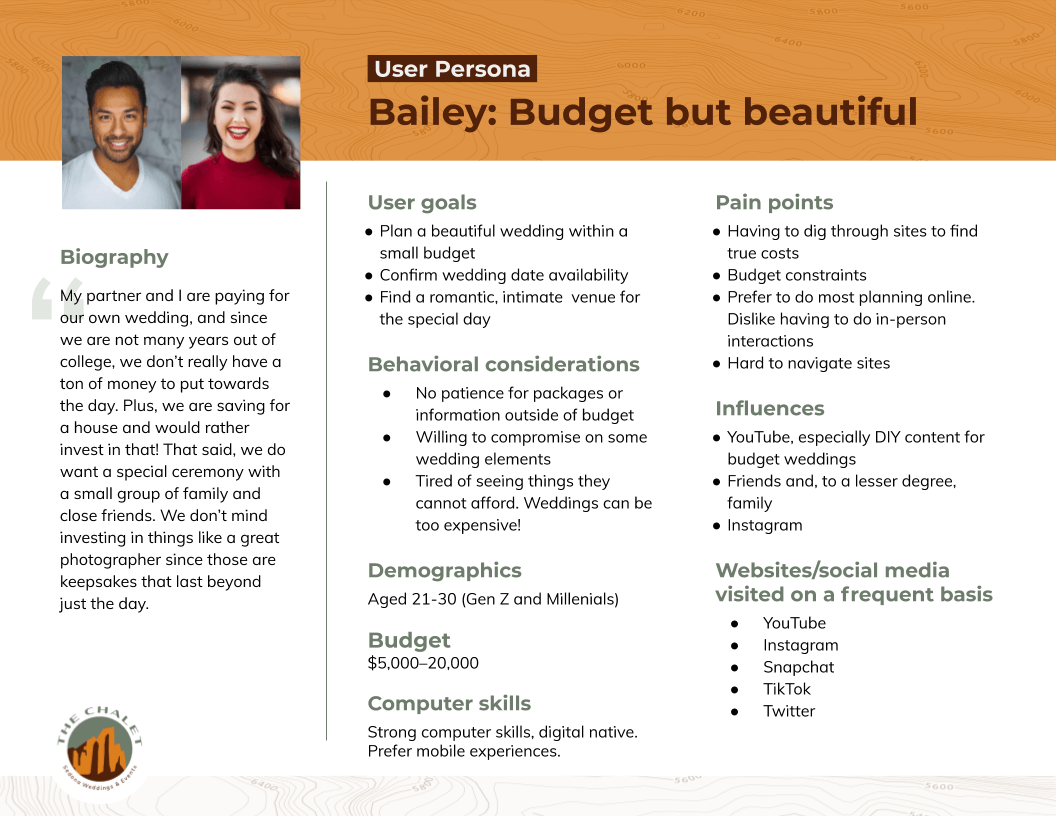

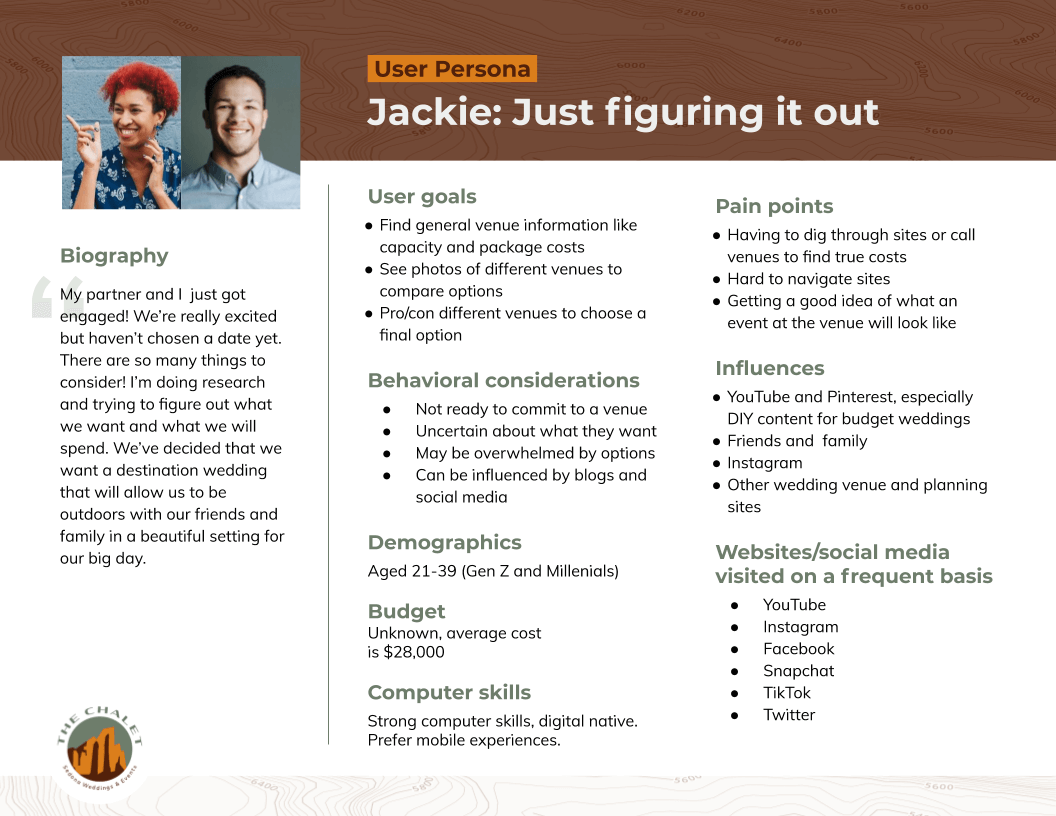
Site Plan
The site plan shows how web pages and information will be organized on The Chalet's website. The site plan was determined through identifying goals and requirements and researching users and competitors. A card sort exercise was used to best determine the site structure as informed by all the research.






Navigation Plan
The Chalet users, at all stages of the wedding planning process, are faced with a multitude of options and choices. The goal is to create a simple, user-friendly interface as well as a fun experience for those planning their big day.
The Chalet website’s primary goal will be conversions — to encourage users to purchase wedding packages at our venue. As such, the main navigation will be kept minimal to reduce choice paralysis for users. There will be 5 pages linked on the main navigation — Venue, Wedding Packages, About, Blog and Contact.
A hamburger menu will house a more comprehensive vertical menu that can be used to reveal secondary and tertiary pages. This hamburger menu will also be present in the mobile experience.
Call-to-action buttons will be used on the homepage to direct users to the wedding package builder as well as the wedding style quiz. The goal of these buttons is to create additional points into the areas of the site optimized for conversion.
Global navigation elements will include the unobtrusive chat window which will be present on all pages except for the blog section, and the cart.
A well-organized footer will provide an additional wayfinding tool for our users.
Breadcrumbs will be used throughout the site to help users orient themselves within the structure. The site navigation design will be built with a mobile-first approach due to a slightly higher percentage of the audience researching and planning online on mobile.
Wireframes
Annotated wireframes provide additional details for the development team.

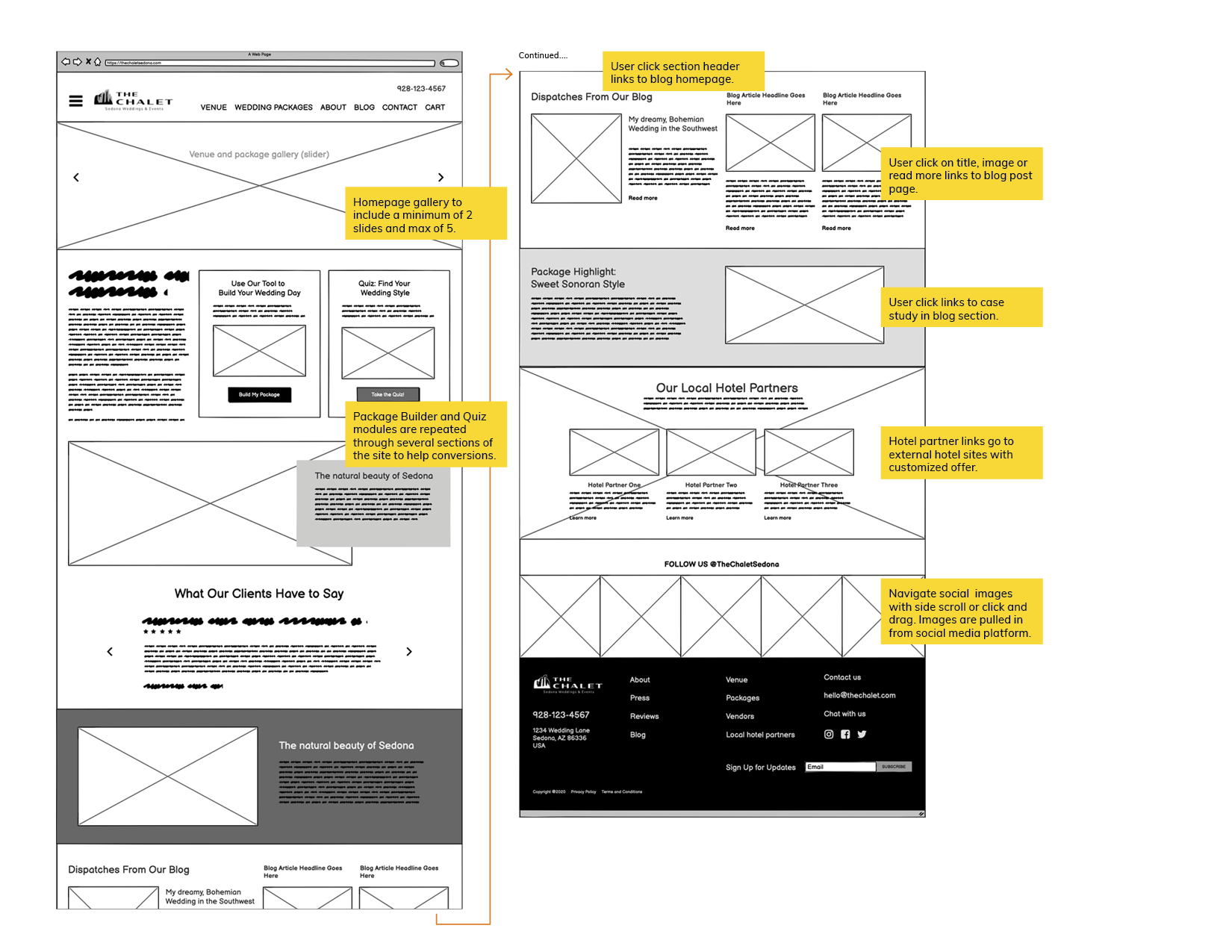










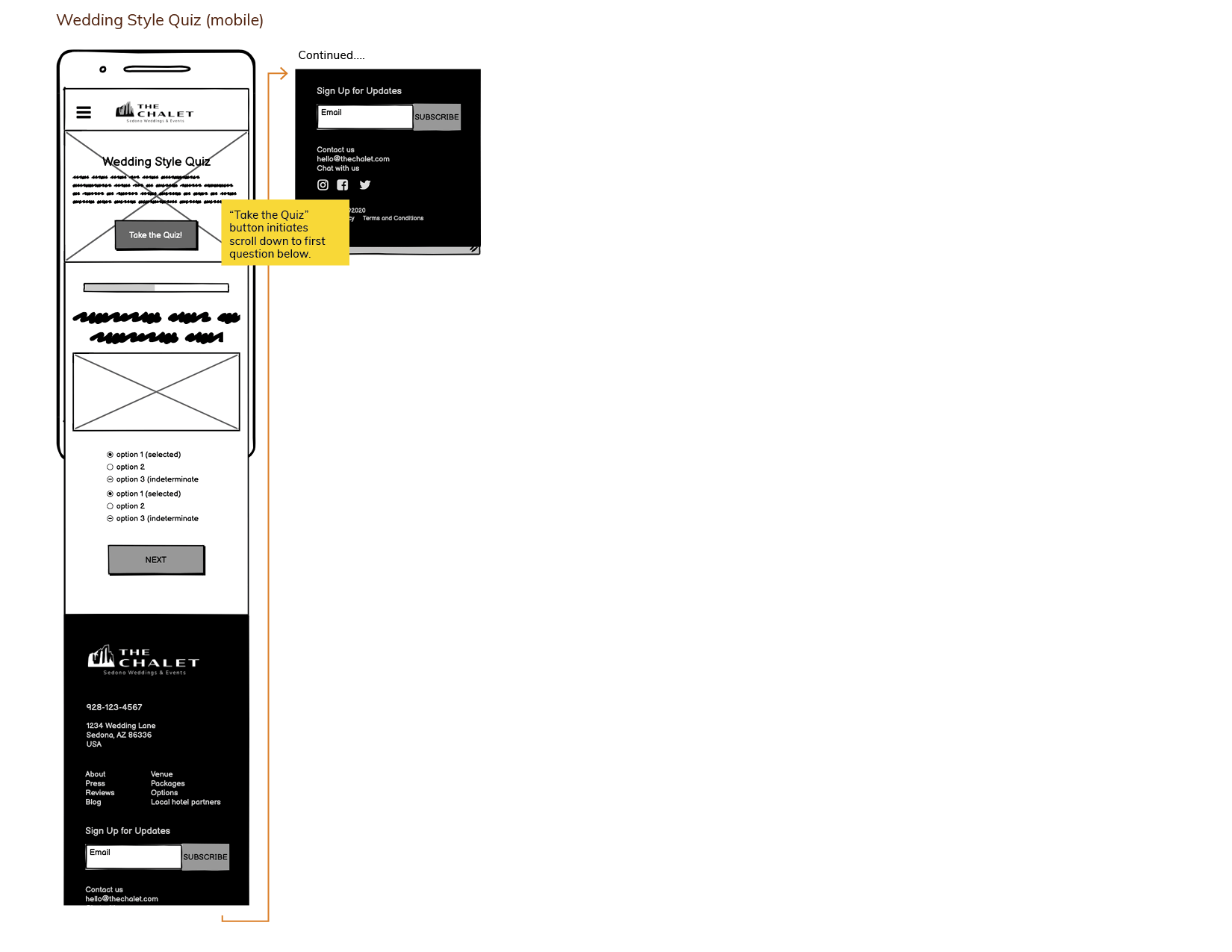





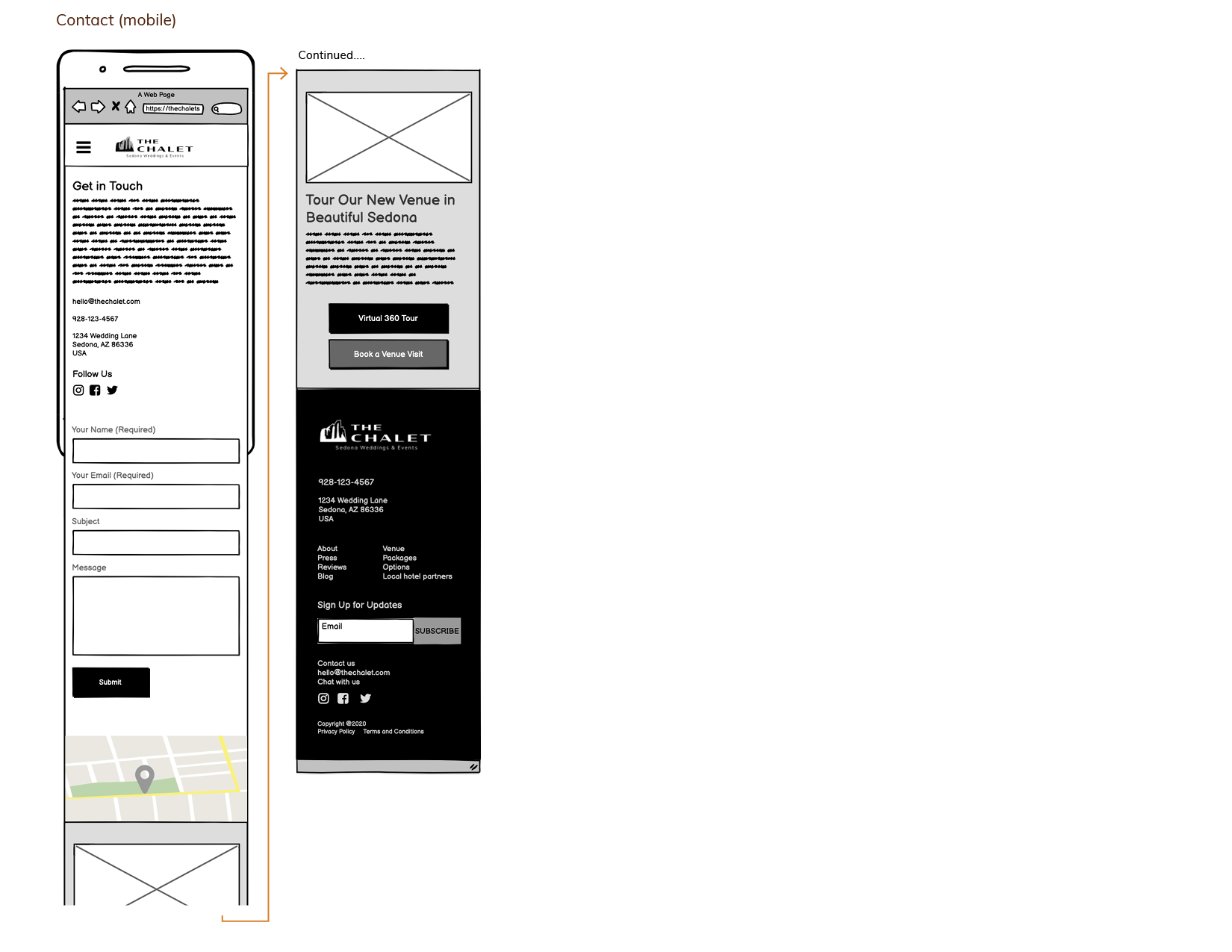



Interactive prototype
Since completing this project, I've used the research and wireframing to begin to develop the high-fidelity interactive prototype for the wedding planner. Since the research showed that most planning is done online, I've focused on the mobile experience first.
Below are screens for the user onboarding flow. The user is introduced to the planner and has the option to sign up for an account, log in or continue as a guest.

Contact
LinkedIn: hannanorris
Instagram: @hn.de_sign
Behance: @hnorris
© Hanna Norris 2023